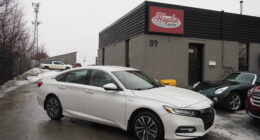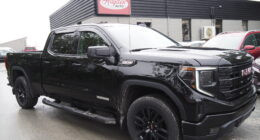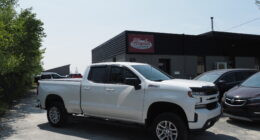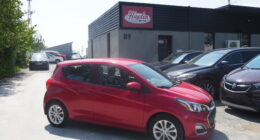Blocking Out the Winter Glare

By the time they’re old enough to buy a car, most Canadians know their winterisation routines off by heart. But there’s one vital precaution that many people forget: protecting their eyes against winter glare.
So when roads and landscapes are blanketed in dazzling snow and ice for months on end, these highly reflective surfaces increase the risks of eye damage. That’s why smart drivers add an annual eye examination to their winter checklists:
- Eyes – check.
- Tyre chains – check.
- Kitty litter – check.
- Shovel – check.
- Ice scraper – check.
- Extra gloves – check.
- Road flares, jumper cables, flashlights, and blankets – check, check, check, check.
Ultraviolet Rays Are Dangerous
Threatening health and comfort, destructive ultraviolet rays can cause cataracts to develop quickly, even younger people. Furthermore, they can trigger changes in the delicate tissues (called the pterygium and pinguecula) that form the white of the eye. Expanding onto the cornea covering the front of the eyeball, these lesions may lead to deteriorating vision.
Deep in the back of our eyes, the retina is a complex mesh of specialised cells that allows us to see the outside world. Although only half a millimetre thick, this delicate structure lines the inner part of the eyeball. Research has shown that ultraviolet light can cause severe damage to these fragile cells. In fact, the most common problem is age-related macular degeneration – which is a complicated name for blurred central vision.
Double the Winter Glare
Moreover, prolonged exposure to UV light is doubly dangerous in Canadian winters, when light bounces off frozen surfaces, having travelled 150 million kilometres from the sun. So just think of the nefarious effects of sunlight on outdoor surfaces (like paint finishes on garden furniture, automobiles, and sports gear) and imagine what those powerful rays are doing to the delicate inner linings of our eyes!
Unfortunately, these harsh conditions often force drivers to squint, making it harder for them to swiftly absorb input on what is happening around their vehicle. In itself, this is a factor that is a hazard. Additionally, constant squinting causes eyestrain that can become debilitating during a long trip, with headaches, dizziness, and difficulties in focusing for hours after reaching their destinations.
Twice the Winter Glare Protection: UV + Polarisation
Luckily, the solution is both simple and affordable: wearing UV treated sunglasses all the time when driving. That’s because there’s always plenty of ultraviolet light around, even on cloudy days. Additionally, the glare of sunlight reflecting off white snow and glittering ice can be diffused even more by the low level of the winter sun, which stays closer to the horizon for months on end.
No matter how tight your budget, money spent on polarised lenses is always a wise investment. They block the incoming glare that reflects off pale surfaces, while darkening brighter objects. With full UVA and UVB protection, good quality driving glasses lessen the negative impacts of exposure to daylight (not just sunshine).
Quality Counts
However, there are notable differences in image quality, even among lenses with equal UV protection. A top-grade polarised lens has less distortion, with additional treatments recommended. Anti-reflective coatings reduce windscreen reflections and make oncoming car headlights less dazzling, with clearer vision. Colour Is important here, with neutral greys and ambers strengthening contrasts and definitions.
For people who need prescription lenses to drive, UV protection is a must. But if light-adaptive (photochromic) prescription sunglasses are beyond the budget, a simple pair of tinted polarised flip-up clip-ons does a great job. Many Canadian drivers find that the right set of polarised lenses helps them relax behind the wheel, with enhanced situational awareness. Without squinting or straining, it’s easier for them to see what’s happening, even many yards away.
Book an Eye Test for Winter Glare Protection
Although rarely included on late autumn auto-prepping checklists, smart drivers are starting to schedule pre-Christmas appointments with their ophthalmologists, looking for effective glare protection when driving under harsh winter conditions. And this makes perfect sense, as regular winterisation items are easily replaced or updated. The only exception is vision – there are no spares that can replace our precious eyes.
Looking For Quick & Easy Financing?
We know how to find the best vehicle for your situation, and have you leave the lot with a smile on your face.
Apply now!


